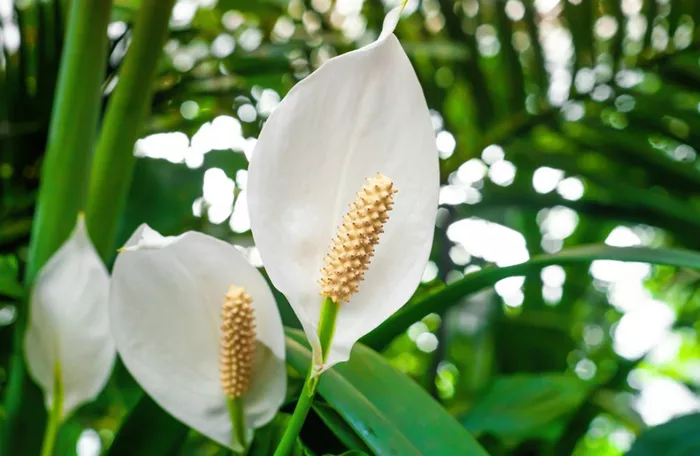Peace lilies are among the most elegant and rewarding houseplants, their graceful white blooms bringing a sense of tranquility to any space. Known for their low-maintenance reputation, these popular indoor plants can still be surprisingly finicky when it comes to blooming. Without the right care, they can quickly wilt, develop yellow leaves, or refuse to flower altogether.
While peace lilies are resilient, they require a delicate balance of light, water, and—most importantly—nutrition to thrive. Proper feeding is crucial in keeping these stunning plants healthy and ensuring that their blooms last as long as possible.
According to Rob Clarke, technical manager at Westland Horticulture, one essential task can make all the difference: fertilizing your peace lily every two weeks. This simple routine provides the necessary nutrients to encourage strong, healthy blooms and maintain the plant’s overall vitality.
Why Feeding Matters
Like all flowering plants, peace lilies need an adequate supply of nutrients to produce their signature white blooms. A well-balanced fertilizer ensures they receive the right mix of nitrogen, phosphorus, and potassium—each playing a vital role in the plant’s development. Nitrogen promotes lush, green foliage, phosphorus supports flower production, and potassium strengthens the plant’s overall resilience.
During the active growing months of spring and summer, peace lilies require regular feeding to sustain their blooms. If neglected, the plant may develop weak, spindly stems, lack flowers, or exhibit signs of nutrient deficiencies such as yellowing leaves.
How to Feed Your Peace Lily
To keep your peace lily flourishing, apply a diluted liquid houseplant fertilizer every two weeks during the growing season. Opt for a balanced, water-soluble fertilizer with an equal NPK ratio, such as 10-10-10 or 20-20-20. Alternatively, a bloom-boosting fertilizer with a slightly higher phosphorus content can enhance flowering.
Follow these steps for optimal results:
Dilute the Fertilizer: Always mix the fertilizer with water according to the package instructions. Using too strong a solution can burn the plant’s roots.
Apply During Watering: Incorporate the fertilizer into your regular watering routine to ensure even distribution of nutrients.
Reduce Feeding in Fall and Winter: As the plant enters dormancy, decrease fertilizing to once a month or stop altogether until growth resumes in spring.
Other Care Tips for Long-Lasting Blooms
Beyond feeding, peace lilies require consistent care to stay healthy and bloom for extended periods:
Water Wisely: Keep the soil evenly moist but not waterlogged. Overwatering can lead to root rot, while underwatering may cause drooping leaves.
Provide Indirect Light: Bright, indirect light encourages flowering, while too much direct sunlight can scorch the leaves.
Maintain Humidity: Peace lilies thrive in humid environments. Mist the leaves or place a tray of water nearby to increase moisture levels.
Prune Spent Blooms: Remove wilted flowers by cutting them at the base to redirect the plant’s energy into new growth.
By incorporating biweekly feeding into your peace lily care routine, you’ll enjoy healthier plants with longer-lasting, vibrant blooms. With just a little extra attention, your peace lily will continue to bring beauty and serenity to your home for years to come.


